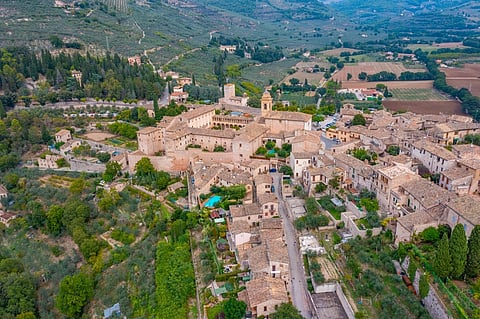
- Destinations
- Experiences
- Stay
- What's new
- Editor’s Picks
- Responsible Tourism
- CampaignsCampaigns
- Subscribe

There is still plenty that the past has yet to reveal. And in the last few years, archaeological discoveries seem to be pouring in, revealing more about our shared past. Travel and tours related to archaeology, too, have been on the rise. If digging up the past is your jam, then here's another place you should add to your bucket list.
Recently, it was announced that archaeologists have found a buried temple in Italy from the reign of Emperor Constantine. The edifice, which was built in the fourth century C.E., sheds some light on the empire's transition from pagan to Christian devotion. According to reports, the discovery was uncovered in Spello, a well-known mediaeval hilltop city in Italy that is said to have its roots in Constantine's reign between 324 and 337 AD.
According to reports, Saint Louis University historian Douglas Boin stated at the Archaeological Institute of America's annual meeting that he and his team unearthed three walls of the "monumental structure" during digs last summer. “We found three walls of a monumental structure that evidence suggests belonged to a Roman temple that dates to Constantine's period,” Boin said. “It dates to the fourth century AD, and if our team’s hypothesis is right, it will be a remarkable addition to the landscape of this corner of Italy. It will significantly aid in the understanding of the ancient town, the ancient townscape and city society in the later Roman Empire because it potentially shows the continuities between the classical pagan world and early Christian Roman world that often get blurred out or written out of the sweeping historical narratives.”
The discovery was made possible due to the presence of a 'rescript' from Constantine. A rescript is an emperor's authoritative message. Boin originally came to Spello as a result of a rescript written by Constantine to the townsfolk during his rule, which was unearthed in the 1700s and is now on display at the town hall of Spello. In it, Constantine stated that he would grant Spello's people permission to hold a religious celebration in their town rather than travelling to another, under the condition that they build a temple dedicated to Constantine's divine ancestors.
According to the Saint Louis University news, the temple was uncovered beneath a parking lot, where monumental foundations had previously been believed. Another season of work will be required to acquire additional supporting data and test the team's hypothesis, but if it holds, this temple will become the largest evidence of the Imperial Cult in both fourth-century Italy and the late Roman Empire.
